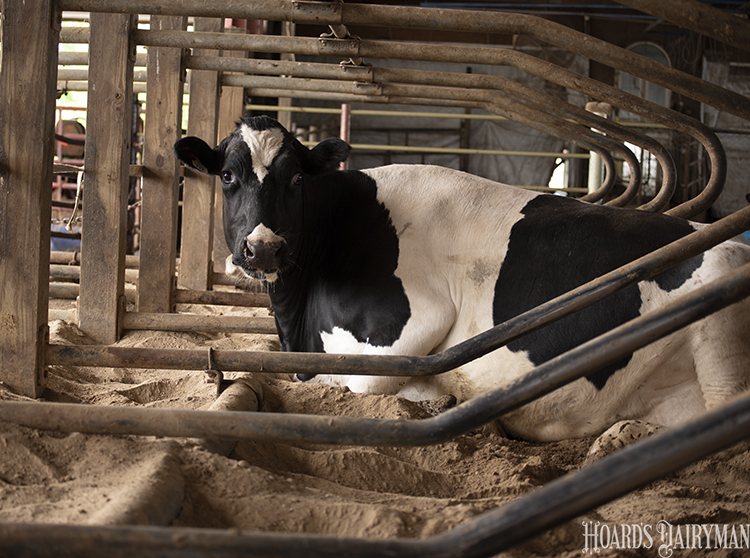
Assuming the pen is not extremely overstocked, the dimensions of the stall is another important consideration that may influence cow lying time as much as anything else. A high-producing cow wants to spend at least 12 to 14 hours each day resting and ruminating but will not if the stalls are cramped and uncomfortable.
Identify a problem
First, determine if lying time in stalls may be a problem on the farm. Dan McFarland of Penn State Extension described that his most common metric for evaluating the value of a barn’s stalls is the stall use index. This index identifies how well cows are using stalls as opposed to standing idly when not feeding.
Stall use index = No. of cows lying in stalls divided by (No. of total cows – No. of cows eating)
All lying time indices should be calculated one to two hours after milking, when cows are most inclined to lie down. If stalls are being used effectively, the stall use index should be at least 75%, McFarland noted.
A potential solution
If stalls are available but cows are not using them, they may not be big enough to accommodate all four common resting positions various cows demonstrate: short, long, narrow, and wide.
When length of the stall is measured from the alley curb, McFarland recommends at least 8 feet for open front stalls and 9 feet for closed front stalls for large frame cows. For smaller breeds, aim for 7 feet if open and 8 feet if closed. Beware of low barriers at the front of stalls that may inhibit lunging space.
If stalls are short, lunge space can be made up by widening stalls. Generally, stalls should be at least 48 to 50 inches wide for large cows and a minimum of 46 inches wide for small cows. Repositioning dividers to provide 54 to 56 inches of width per stall will encourage cows to lay diagonally and allow room to get up and down comfortably. McFarland expressed no preference on type of partitions, but he pointed out that even flexible dividers should not be placed closer together than these recommendations.
Finally, the extension educator addressed the position of the neck rail, which is designed to preserve the cow’s lunge space. When standing with all four feet in the stall, he described that a cow may be touching the neck rail but should not be pushing on it. For large cows, this means setting the rail about 70 inches forward from the curb and at least 48 inches high. In a herd of smaller cows, he recommends 66 inches forward and 46 inches high.
“Design the stalls for the largest cow in the group or the stalls will determine the largest cow in the group eventually,” McFarland concluded.








